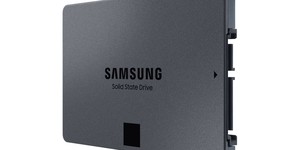Intel announces it's manufactured 10 million QLC 3D NAND SSDs
February 11, 2020 | 11:00
Companies: #intel

Intel has just successfully finished manufacturing 10 million QLC 3D NAND Solid-State Drives, and it's keen to use the opportunity to stress the importance of the technology.
Number 10 million was built in Dalian, China last week with the milestone having been achieved in under 2 years, given production began in late 2018. Intel's thinking is that it will ensure that QLC will be seen as a mainstream technology when it comes to high-capacity drives.
To celebrate the achievement, Intel released a few facts to show off why QLC is so important. Namely, it points out that the tech is used in the Intel SSD 660p, Intel SSD 665p and Intel Optane Memory H10 - essentially, storage solutions that are generally well regarded. Intel's QLC drive has 4 bits per cell and stores data in both 64-layer and 96-layer NAND configurations.
Intel also explained how it's been developing the technology for the past decade in a bid to make it as efficient as possible. Director of Client SSD Strategic Planning and Product Marketing at Intel, Dave Lundell, boasted, "Many have talked about QLC technology, but Intel has shipped it, and at scale."
So what does all that PR grandstanding actually mean for the consumer? At its simplest, it means bigger storage. Higher storage is more easily achievable with QLC based drives, albeit at a cost to durability. The latter is less of an issue for home use though, in comparison to enterprise needs.
As it stands, Intel has been able to improve upon the existing storage technology with the company citing that moving to 96 layers has seen it able to improve density. As an example, triple-cell (TLC) technology could store 384 GB/die while Intel's 3D QLC flash has improved things by implementing 64 layers with 4 bits per cell, ensuring it's capable of storing a 1,024 GB/die. 96 layers has improved that even more so.
Currently, the Intel 665p 2TB is able to provide sequential speeds of up to 2,000MB/s read and 1,925MB/s write compared to the previous 660p's model's reports of 1,800MB/s for sequential read/write speeds. It's a slight difference but, combined with 50% improved endurance compared to the 660p, demonstrates Intel's plans to ensure that QLC is the future. Indeed, it's now part of its overall storage portfolio for both client and data centre products.
Essentially, it's a landmark that might not seem so exciting just yet but could mean a lot further down the line.

MSI MPG Velox 100R Chassis Review
October 14 2021 | 15:04








Want to comment? Please log in.